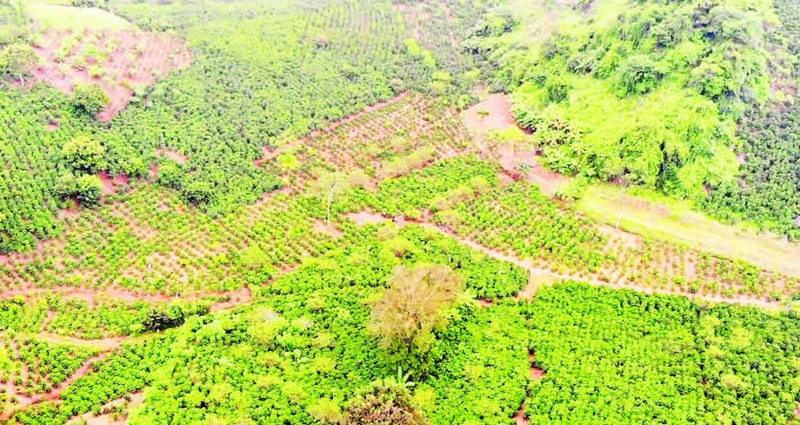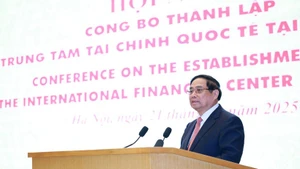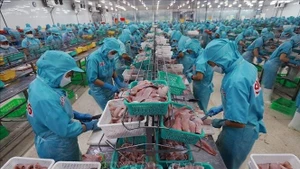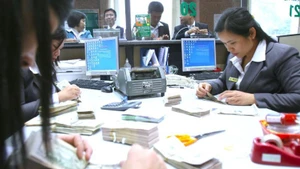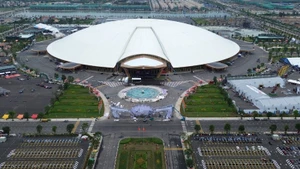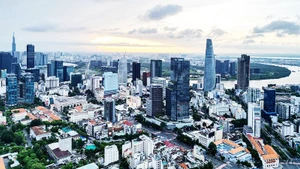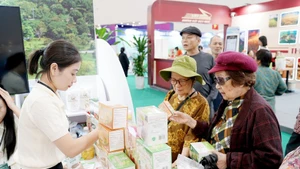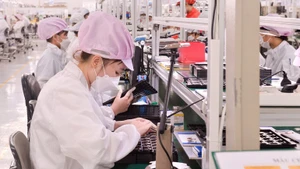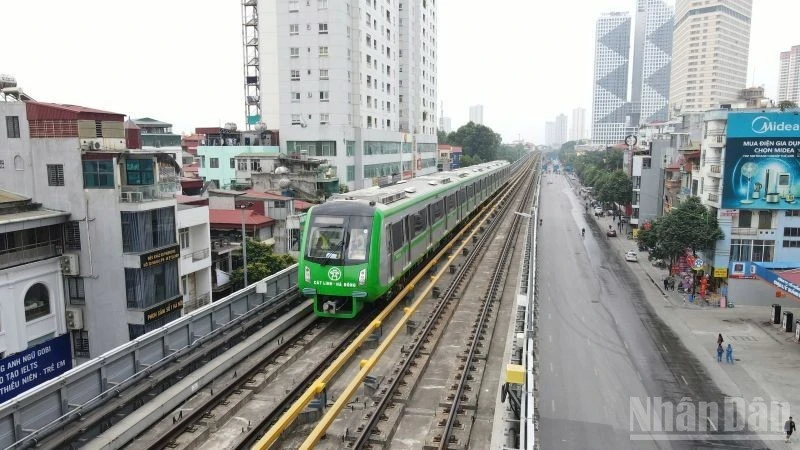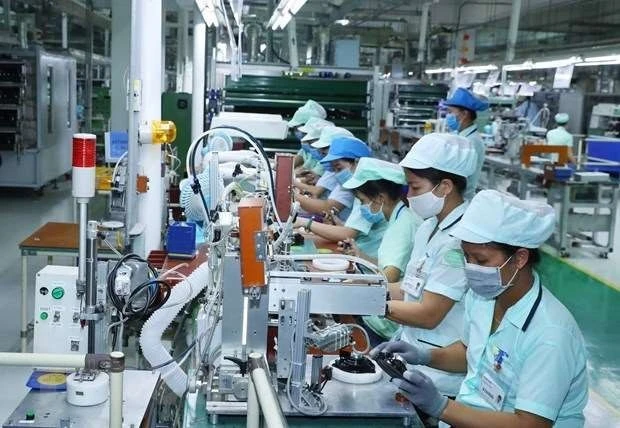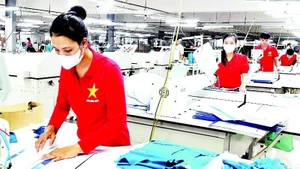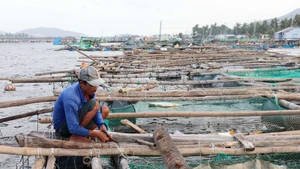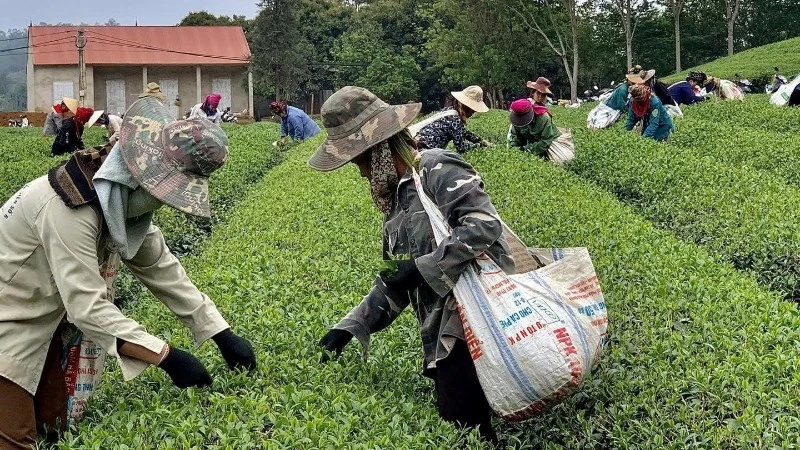During the 2021-2025 period, Son La’s coffee sector has achieved many positive results, laying a solid foundation for its sustainable devleopment strategy towards 2025.
The province now has around 24,300 hectares of coffee, a 36% increase compared to 2021, meeting 121% of the planned target. Coffee bean production is estimated at 37,724 tonnes, up 41.1% from 2021, and exceeding the target by 12.27%.
In recent years, stable coffee prices and favorable market access thanks to an increasingly complete purchasing and processing system have encouraged farmers to expand their coffee plantations. On average, each hectare of coffee yields about 11 tonnes of fresh cherries, priced between 15,000 and 20,000 VND per kg, generating revenue of 170-200 million VND per ha and profit of more than 140 million VND per ha after costs. This attractive income has helped improve the livelihoods of tens of thousands of coffee-growing households.
Son La coffee, particularly Arabica, is mainly grown on basalt, limestone and ancient alluvial soils at altitudes of 600-1,200 metres, in a cool climate with ideal temperatures ranging from 15°C to 24°C. These unique soil and ecological conditions contribute to its balanced flavour, mild aroma, refined acidity and lingering sweetness – the distinctive qualities of Son La coffee.
However, most coffee areas still depend on rainfall, with only a small proportion equipped with water-saving systems such as drip or sprinkler irrigation. Drought during the flowering and fruiting stages, or heavy rain causing erosion and soil washout, remain major challenges, alongside frost damage that can kill trees or burn leaves.
Currently, Catimor coffee still accounts for over 90% of the cultivated area. While this variety adapts well and is resistant to rust disease, it produces small beans and relatively low yields. Some plantations established around 2000 have aged, reducing productivity. To address this, Son La has trialled new varieties such as THA1, TN7, TN9, H1, Starmaya and TN2, while replanting and grafting over 2,818 hectares. However, this move has only reached 36.1% of the target.
The main reason lies in farmers’ hesitation over high investment costs and the long establishment period, especially as current coffee prices remain favourable. To address this, Son La Province has developed three mother-tree orchards with 5,000 mother trees, producing nearly 9,000 kilograms of seeds and 10,500 cuttings each year. These supplies are used for new plantations, replanting, and grafting to rejuvenate coffee areas in key communes across the province.
According to statistics, Son La currently has 28 enterprises and cooperatives engaged in coffee production and processing, including 26 preliminary and deep-processing facilities. Linkage models between enterprises, cooperatives and farmers are proving increasingly effective, creating concentrated raw material areas that ensure quality and stable market outlets.
The province has five industrial processing facilities and more than 15 preliminary processing facilities, meeting over 50% of fresh output. The rest is still processed manually, affecting bean quality. Many enterprises have invested in wastewater treatment systems and utilised by-products for organic fertiliser production, contributing to environmental protection.
In the first half of 2025 alone, Son La exported 17,800 tonnes of coffee beans worth nearly 70 million USD, accounting for more than 68% of the province’s total export value. The full-year figure is expected to reach 34,000 tonnes, equivalent to 100 million USD, with key markets including the European Union (EU), North America, the Middle East and ASEAN.
Nguyen Thanh Cong, Vice Chairman of the Son La People’s Committee, noted that the province has granted sustainability certifications (RA, 4C) for 23,448 hectares of coffee, 156% above target. In addition, 141 hectares are certified VietGAP, 543 hectares are cultivated organically, and 38.6 hectares have plantation codes. Specialty coffee covers 1,120 hectares, producing 1,000 tonnes. Since 2017, Son La coffee has been protected with geographical indication status.
Seven organisations – including enterprises and cooperatives such as Minh Tien, Bich Thao, Phuc Sinh and Aratay – have been licensed to use this indication. Five Son La coffee products have received OCOP certification, including one five-star and four four-star products, helping enhance branding and added value.
Recently, Son La has cooperated with the German Agency for International Cooperation (GIZ) to apply the “North-west Coffee” digital application, providing cultivation data, pest and weather forecasts to help farmers adapt to climate change.
The project also supported 35.7 hectares of trial replanting with new varieties, distributed 9,500 macadamia seedlings for intercropping, and organised more than 50 training courses for over 1,400 farmers. International organisations such as Care and SRD have also supported livelihoods and promoted women’s roles in coffee production in communes in Son La.
For the 2026-2030 period, Son La aims to expand its coffee area to 25,000 hectares with an output of 40,000 tonnes. By 2035, the province targets 27,000 hectares and 47,000 tonnes. The area of specialty and certified sustainable coffee will increase significantly, with five high-tech zones to be established in key districts. Son La also prioritises deep processing, forming coffee industrial clusters, raising the proportion of industrial processing to 80%, deep processing to 25%, and allocating 85% of production for export.
Alongside these, Son La will continue implementing comprehensive measures in science and technology, sustainable farming, linkages, market development, credit access and branding to secure sustainable growth.
